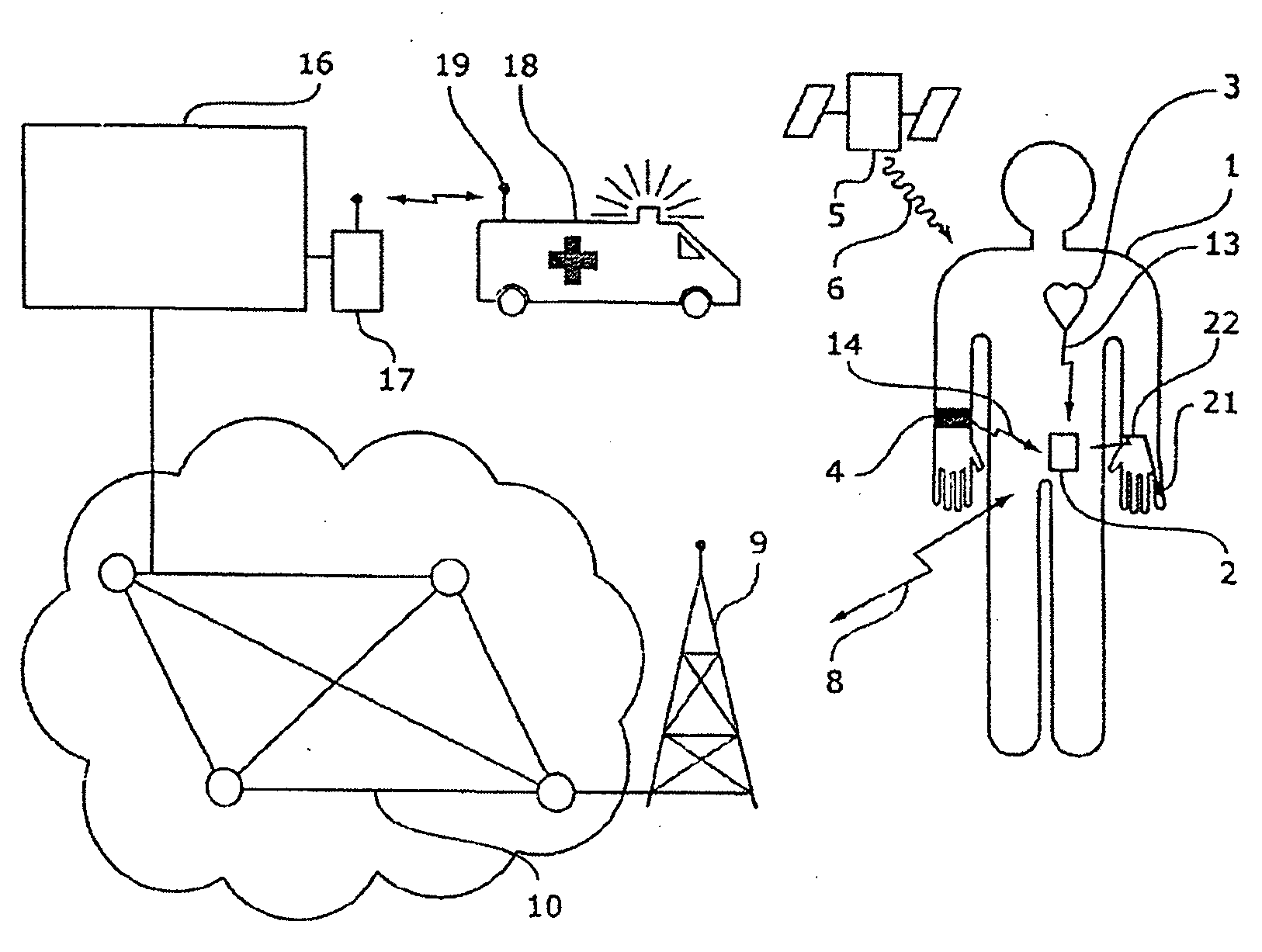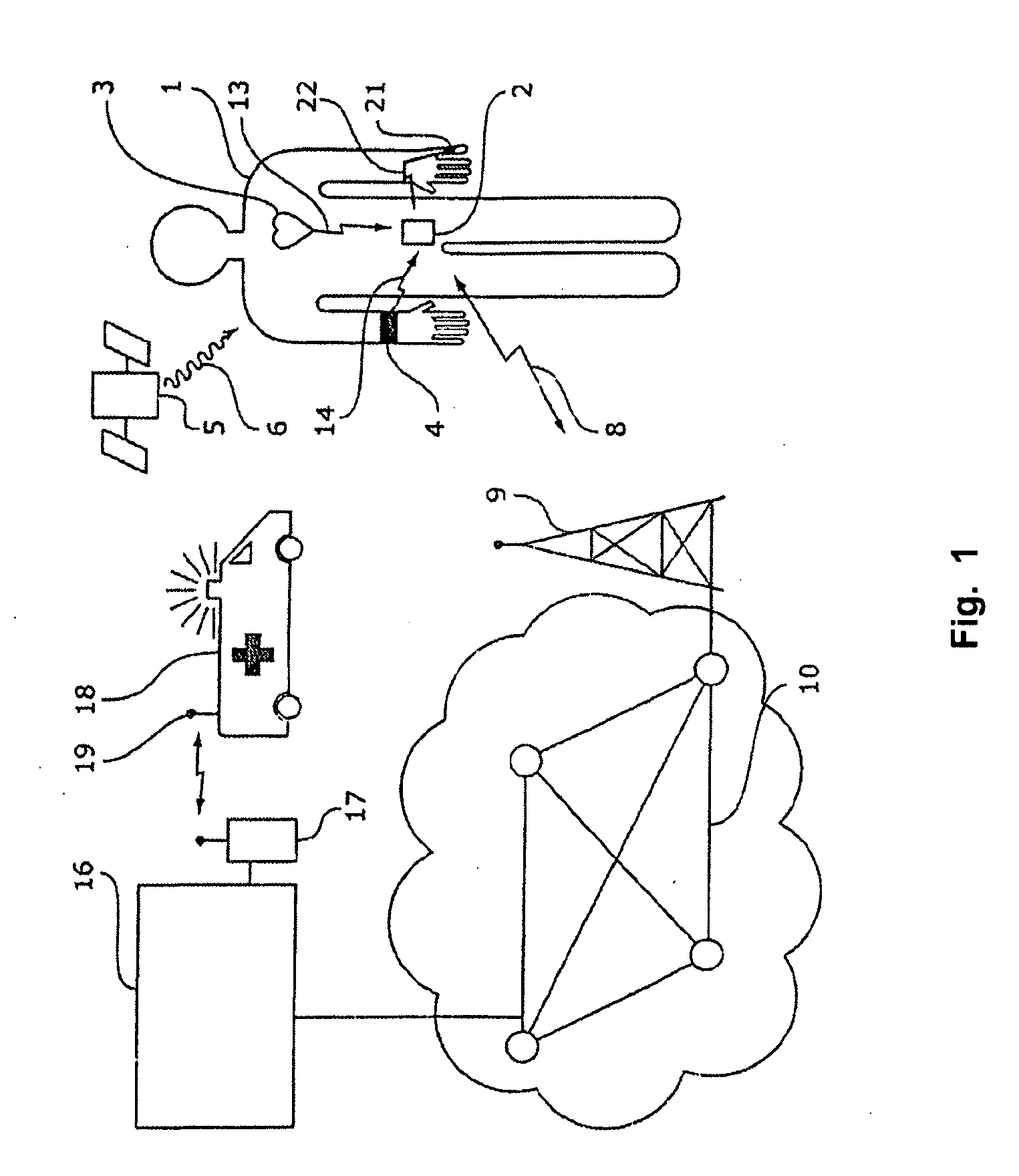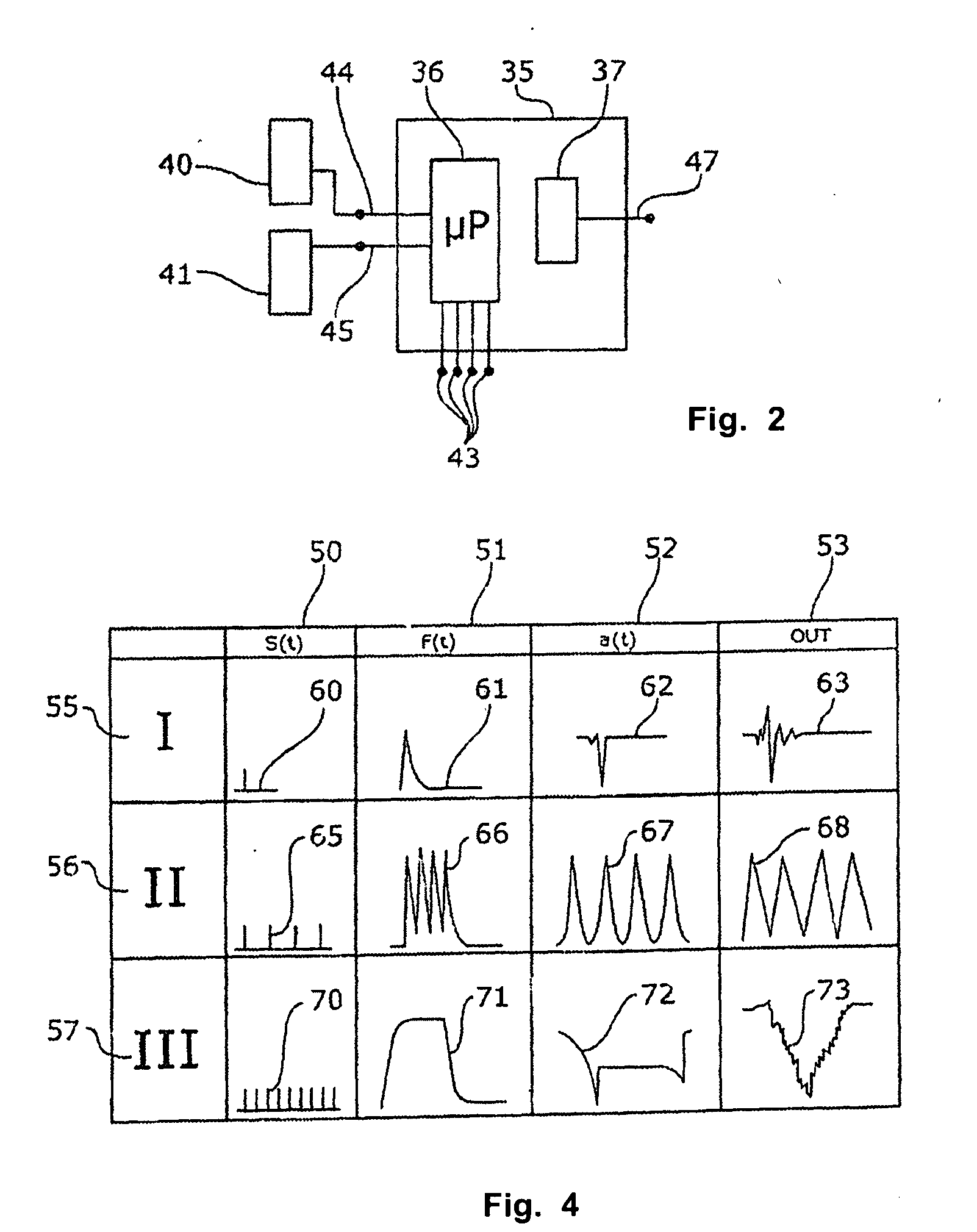Patient monitoring system for the real-time detection of epileptic seizures
a monitoring system and epileptic technology, applied in the field of real-time can solve the problems of inability to monitor the rest of the patient population, inability to monitor the patient population, so as to facilitate the reliable detection of epileptic seizures
- Summary
- Abstract
- Description
- Claims
- Application Information
AI Technical Summary
Benefits of technology
Problems solved by technology
Method used
Image
Examples
Embodiment Construction
[0023]The present invention achieves this objective by providing a patient monitoring system for the real-time detection of epileptic seizures suffered by a user of the monitoring system, comprising control means for receiving measuring signals and, subject to the measuring signals, generating an alarm signal, at least one hart rate sensor for measuring the heart rate of the user and, subject to the measurement, generating a heart rate signal, and at least one muscular tension sensor for measuring the change and the intensity of the contraction of at least one muscle of the user and, subject to the measurement, generating a muscle contraction signal, wherein the control means are designed for, subject to both the heart signal and the muscle contraction signal, generating an alarm signal when the user suffers an epileptic seizure.
[0024]The invention is based on the understanding that epileptic seizures can be electronically identified in a reliable manner by combining heart rate meas...
PUM
 Login to View More
Login to View More Abstract
Description
Claims
Application Information
 Login to View More
Login to View More - R&D
- Intellectual Property
- Life Sciences
- Materials
- Tech Scout
- Unparalleled Data Quality
- Higher Quality Content
- 60% Fewer Hallucinations
Browse by: Latest US Patents, China's latest patents, Technical Efficacy Thesaurus, Application Domain, Technology Topic, Popular Technical Reports.
© 2025 PatSnap. All rights reserved.Legal|Privacy policy|Modern Slavery Act Transparency Statement|Sitemap|About US| Contact US: help@patsnap.com



